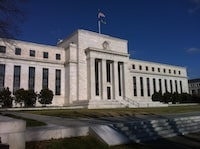US Inflation Hits Just 2.7% in July—Fed’s ’Soft Landing’ Fantasy Alive?

Markets exhale as inflation crawls in under target—but don’t pop the champagne yet.
The CPI Mirage
July’s 2.7% print dodged forecasts, giving Wall Street’s algo-traders an excuse to buy everything. Goldilocks believers are whispering ‘disinflation’ again—ignoring the sticky 18% grocery bill surge since 2022.
Crypto’s Inflation Hedge Paradox
Bitcoin barely twitched on the news. Turns out ‘digital gold’ trades more like a tech stock these days—another narrative casualty in finance’s theater of the absurd.
The Fed’s Tightrope Act
Powell’s team now faces their favorite dilemma: cut rates to appease politicians or hold to avoid looking reckless. Either way, your 401(k) becomes collateral damage.
Funny how ‘transitory’ inflation took three years to almost normalize—just in time for the election cycle. How… convenient.
Core inflation trends
Excluding food and energy, the Core CPI rose 0.3% for the month and 3.1% year-over-year, matching or slightly exceeding analyst expectations.
The monthly CORE increase was the highest since January, driven largely by shelter costs, which edged up 0.2%. Food prices were flat, while energy prices declined 1.1% for the month.
Tariff impact and political backdrop
Tariffs imposed by President Donald TRUMP showed modest effects in certain categories.
New vehicle prices, often sensitive to tariffs, were unchanged, while used cars and trucks saw a 0.5% increase.
Household furnishings and supplies ROSE 0.7%, but apparel prices were up just 0.1%.
Former WHITE House economist Jared Bernstein commented on CNBC:
“The tariffs are in the numbers, but they’re certainly not jumping out hair on fire at this point.”
These numbers come at a time when the BLS faces scrutiny and leadership changes following criticism from President Trump. The agency has experienced budget cuts and staffing shortages, prompting questions about the reliability of recent data.
Market reaction and Fed outlook
Stock market futures rose after the report, and Treasury yields declined.
Traders increased bets that the Federal Reserve will cut interest rates in September, with the odds of another reduction in October also rising. Ellen Zentner, chief economic strategist at Morgan Stanley Wealth Management, observed:
“Markets will likely embrace these numbers because they should allow the Fed to focus on labor-market weakness and keep a September rate cut on the table.”
Wage growth and inflation outlook
Inflation-adjusted average hourly earnings increased just 0.1% for July, with a 1.2% gain over the year.
Economists are divided on whether tariffs will cause a one-off jump in prices or drive persistent inflation, especially as a broad range of items are affected by recent trade policies.
For those tracking the impact of inflation on bitcoin, historical and current CPI data can provide context for bitcoin’s performance versus the US dollar.

